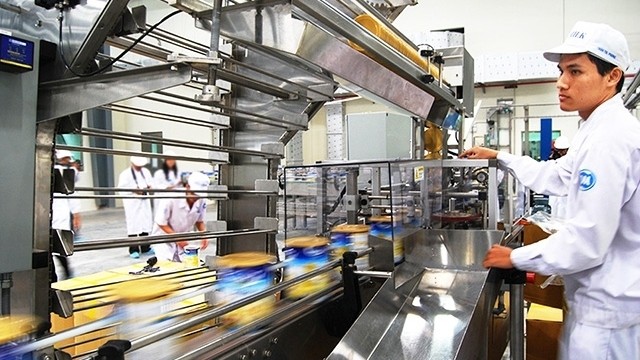Low quality of equitisation
According to the Ministry of Finance, Vietnam equitised 632 SOEs during the 2011-2017 period, with the total value of the state’s stake determined at VND374 trillion (US$16.456 billion). In 2017 alone, total revenues from equitisation and disinvestment were estimated at VND144.577 trillion (US$6.36 billion), more than double the target set by the National Assembly.
The two years of 2017 and 2018 are considered to present many opportunities from the equitisation and disinvestment of leading SOEs and the new developments of the debt market.
A number of bright spots are the successful sales of shares in Sabeco and Kim Lien Hotel, the approval of the PV Oil equitisation plan, and an additional share sale of Vinamilk.
These deals suggest that SOE restructuring has seen positive results in the progress and the number of equitised firms.
However, there remain significant obstacles to this process.
According to Nguyen Duc Thanh, head of the Vietnam Institute for Economic and Policy Research, the progress of SEO equitisation remains behind schedule, while the quality is also low.
Although the process has been determined as a key policy towards SOEs and for the whole economy in general, it has encountered many obstacles, notably the influence of interest groups on the equitisation process, difficulties in the search for consultants and enterprise evaluation, especially large ones with complex structures and operations in various industries.
Echoing Thanh’s view, Director of the Vietnam Institute of Economics Tran Dinh Thien stated that the progress of and number of equitised SOEs are basically guaranteed but the quality remains low.
He elaborated that among the 96.5% of equitised SOEs, only 8% of state capital is transferred to the private sector, which means the process has failed to move national resources from a less efficient sector to one which is more efficient.
With just 8% of state capital sold to the private sector, the state remains the dominant owner of these enterprises, while other sectors are still marginalised, thereby limiting the impacts of the process on corporate governance reform and efforts to attract greater investment.
Many SOEs who retain large state stakes have definitive advantages over other enterprises in the same industry but are performing more poorly than previously.
 |
A drug manufacturing line at Bac Ninh Pharmaceutical Company
Hidden corners
Director of the Ministry of Finance’s corporate finance department, Dang Quyet Tien, stated that the recent controversy over the equitisation of the Vietnam Feature Film Studio (VFS) has partly exposed the hidden corners in the equitisation of SOEs, from the criteria for selecting strategic shareholders and determining the value of intangible assets to determining land use rights in enterprise evaluation.
If the film studio is converted into apartments or supermarkets, it requires the authorities’ permission and the VFS’s value must be re-assessed.
The SOE equitisation process also fails to meet expectations in terms of attracting foreign and strategic investors, said Pham Duc Trung, head of the enterprises reform and development department of the Central Institute of Economic Management.
The National Assembly’s resolution stipulates that the ratio of state ownership must be reduced as much as possible but this is not a straightforward task.
For example, an SOE which planned to reduce state ownership to 65%, proceeded with an initial public offering, yet state ownership remains high at 81%. The company also expected to sell 17% of its shares to strategic investors but only 10% were sold.
Post-equitisation, enterprises will find it hard to succeed if they still retain such amounts of state capital, while holding on to the old structure and outdated technologies.
Another hidden corner of the equitisation process is the use of land-related assets. According to Dr Le Anh Duy at Saigon University, many SOEs were acquired by enterprises operating in different sectors such as the cases of the Vietnam Feature Film Studio, the Vietnam Motors Industry Corporation and the Vietnam National Vegetable, Fruit and Agricultural Product Corporation.
It is clear that investors are only interested in the benefits of SOEs’ land assets rather than enhancing corporate governance of SOEs after the equitisation process.
In addition, assigning insiders or relevant people to sell assets they manage to themselves creates a loophole for corruption. Plots to take advantage of land policies could hatch from the stage of formulating equitisation plans. For example, they could let their enterprises make losses in order to buy cheap later, or intentionally conceal relevant information to prevent others from buying.
















